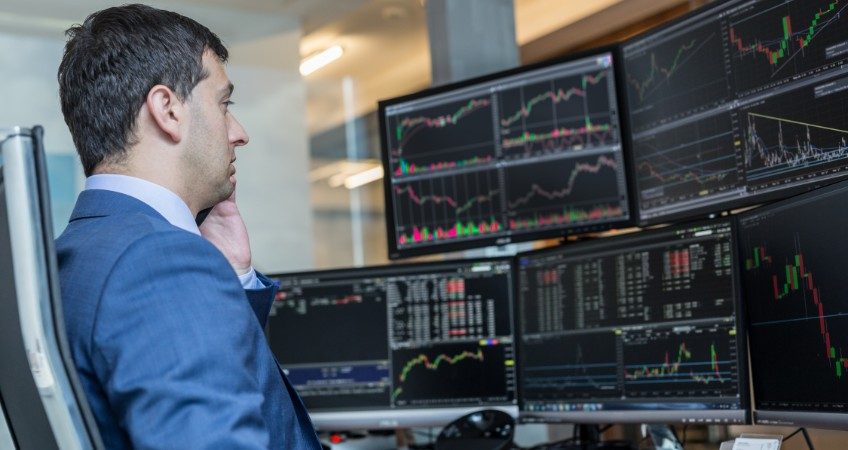
Investing in COMEX? What Investors Need to Know
If you’ve spent any time with investors, you may have heard of COMEX, or commodities exchange. COMEX and commodities are more advanced and complex investment options for investors, and amateurs are generally urged to proceed with caution.
For the investment-savvy, COMEX investments can yield large returns, but run the risk of substantial loss. For those investing in gold, COMEX and commodity futures are some of the highest risks, paired with the highest profit potentials.
Here’s what you need to know about COMEX and gold futures trading.
What is COMEX?
COMEX is the foremost market for trading futures and options for metals, including gold, silver, copper, aluminum, palladium, platinum, and steel. Formerly, COMEX was called Commodity Exchange Inc. before its merger with the New York Mercantile Exchange in the 1990s. Currently, COMEX is headquartered at the World Financial Center in Manhattan, as a division of the Chicago Mercantile Exchange (the largest futures exchange in the world).
Like most investments, COMEX is influenced by day-to-day fluctuations in prices, and functions as a clearinghouse for metal futures. In general, the futures markets function as a hedge against price risk, and less than 1% of trades go to delivery.
What are commodities?
To understand COMEX, one must first understand commodities, and their function in futures markets. Commodities are products that are standardized in use and quality, no matter where they came from. A lot of commodities are fungible, meaning they can be exchanged with other commodities of the same grade, regardless of the source. Investors often focus on the raw materials that make up manufactured products when considering an investment.
In the case of gold, silver, copper, and aluminum, these commodities are widely used in electronics and appliances, so investors may invest in COMEX based on demand for these commodities in manufacturing.
There are two types of commodities:
1. Hard commodities
Hard commodities are mined, drilled, refined, or processed. Gold, silver, copper, aluminum, palladium, platinum, and steel (COMEX commodities) are all considered hard commodities.
2. Soft commodities
Soft commodities are grown or raised, like agriculture or ranching. Corn, beans, livestock, and coffee are examples of soft commodities. Things that are grown or ranched, including corn, wheat, soybeans, and cattle.
The history of commodity trading
Commodity trading dates back to the earliest human civilizations, about 6500 years ago. We’ve come a long way since the days of trading goats for clay tokens.
In the current era, commodities trading generally consists of trading futures contracts and derivatives. Hundreds of years ago, commodities trading was usually as simple as bartering cattle for wheat.
Historically, there have been four categories of commodities trading:
- Energy Commodities (oil, gas, and electricity)
- Metal Commodities (gold, silver, and aluminum)
- Livestock and Meat Commodities (cattle, chickens, and goats)
- Agricultural Commodities (soybeans, coffee, and sugar)
COMEX Doesn’t Supply Precious Metals
COMEX doesn’t supply gold, but is crucial to the gold delivery process.
As stated before, less than 1% of trades actually go to delivery. When it does occur, the contract holder needs to notify the clearinghouse and the COMEX that he or she intends to possess the gold commodity. In this arrangement, a short seller that lacks the deliverable gold must liquidate his position by the last trading day.
When an investor requests to take delivery, he or she will be given COMEX deliverable bars, which are produced by approved refiners at the high standards set by COMEX.
The Benefits of COMEX Gold Futures
Investing in commodities is a bit more advanced than more traditional stock market options, like stocks, bonds, and ETFs (exchange-traded funds). There is a significant risk of loss, but also provides opportunities for profit you may not find in the more traditional markets.
1. Diversifying your portfolio
Gold Futures investing can diversify your portfolio, taking advantage of the benefits of traditional gold ownership. Like gold ownership, COMEX gold futures are wealth insurance in times of catastrophe, along with a hedge against inflation.
2. Relatively small initial investment
Compared to Exchange Traded Funds (ETFs), futures require a smaller investment. Futures margins usually cost less than 5% of the notional amount, whereas ETFs are 50% of the stock value. Additionally, ETFs have annual fees.
3. Better Trading Access
Generally, ETFs cannot be traded after hours. Futures can be traded just shy of 24 hours a day, 6 days a week.
4. Leverage Opportunities
Despite the comparatively small initial cost, COMEX precious metal futures have a significantly larger opportunity for leveraging than ETFs. On the other hand, these leveraging opportunities have the potential to amplify losses.
COMEX gold futures make the gold markets easily accessible to investors, but can be a bit of a gamble for those without in-depth knowledge of the market.
Find Out More About COMEX and the Gold Market
For investors that lack intimate knowledge of commodities or the crucial influences of the gold market, COMEX investing can be a lot to take in. For insights into commodity investing, futures markets, and COMEX investment options, consult with Republic Monetary Exchange today. For a more holistic picture of the gold markets and what the future holds for gold, subscribe to the Gold Market Discussion.
